NOTCam new clockboards Jan 2010
During an investigation to identify a problem with the Hawaii array it was discovered
that the clock voltage levels were only going to ~3.5V where they are specified to go
to 5V. It was proposed to redesign the array controller clockboard so to deliver the
correct voltage levels with the hope that this could solve the so-called "dark current
problem". The "dark current problem" is the strange behaviour seen where long dark
integrations have less counts than short dark integrations.
The new clockboards were first tested on December 13th 2009, but we had contact with
only two quadrants. This was related to missing contacts on the clockboards which was
easy to correct. The next test was made on January 13th 2010. The new clockboards were
found to be fully functional. As shown below several improvements were found in the
images. The previously strong shift register glow is practically removed, as is a
pattern of horizontal stripes. The readnoise for the reset-read-read mode is lower
and more stable over time.
But the behaviour of counts in dark exposures as a function of integration time
remains essentially unchanged.
On the 17th of January a full Detector Quality Control was run with the new clockboards
and the results are in all aspects in agreement with results obtained with the old
clockboards, except for a notably lower and more stable readnoise for the
reset-read-read mode.
In the following we show the differences between the old and the new clockboards.
Dark images

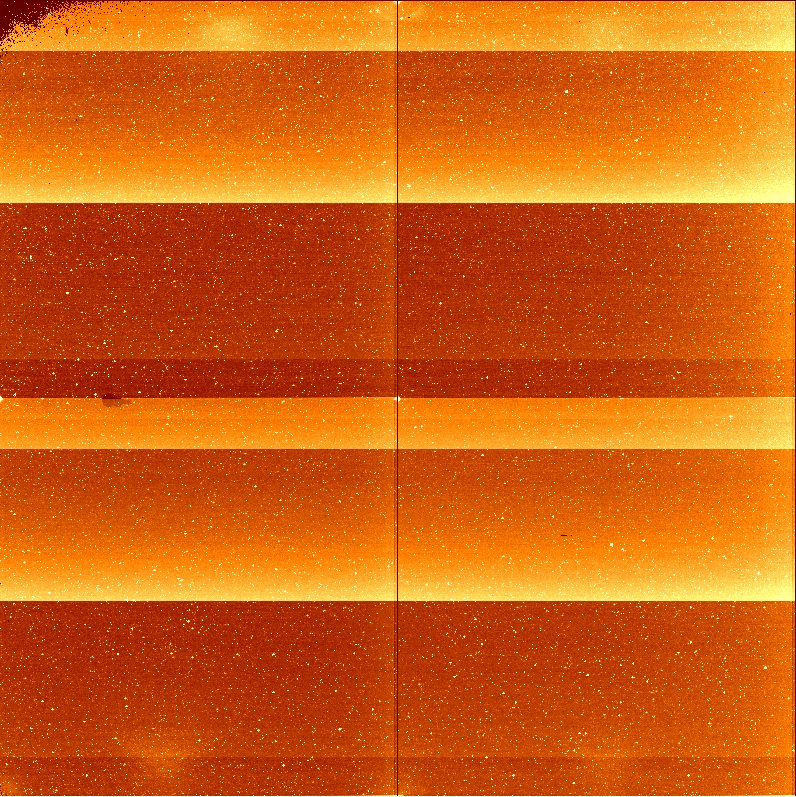
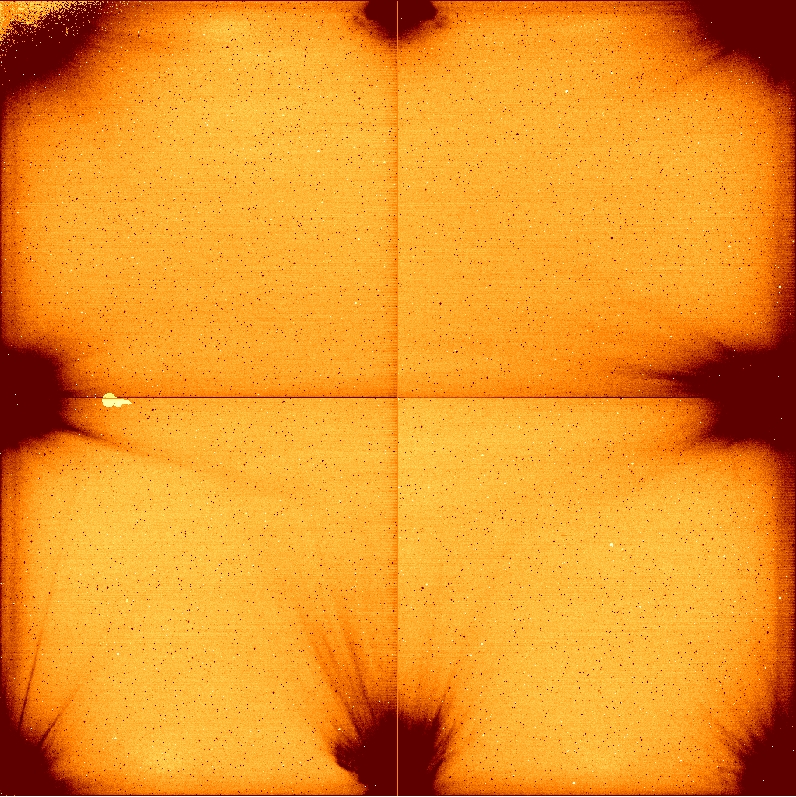
Long ramp-sampling darks dframe 40 8 shown from left to right: 1) old
clockboards, 2) new clockboards, and 3) the difference image.
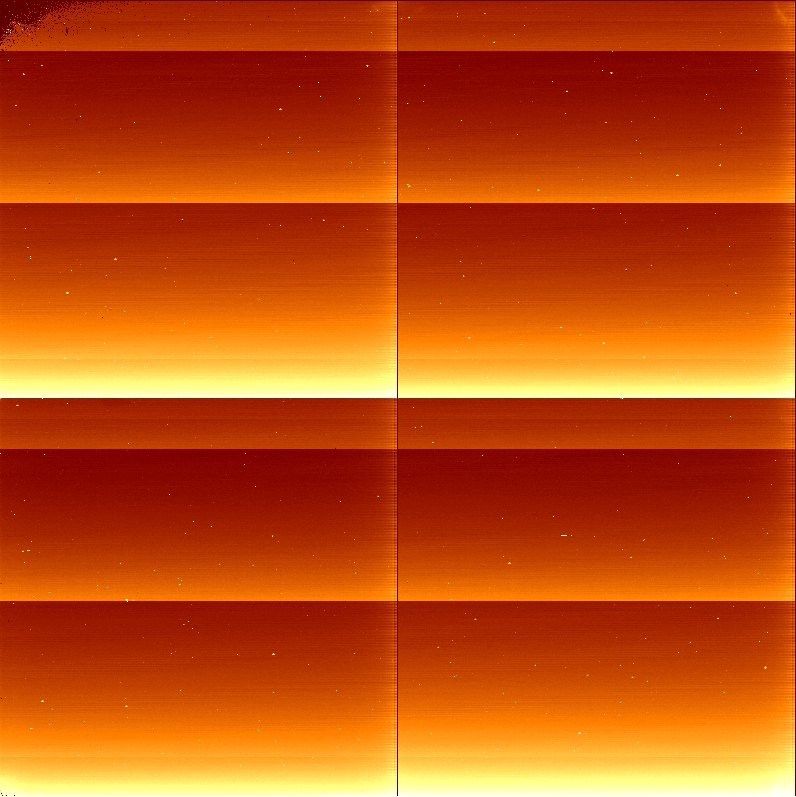
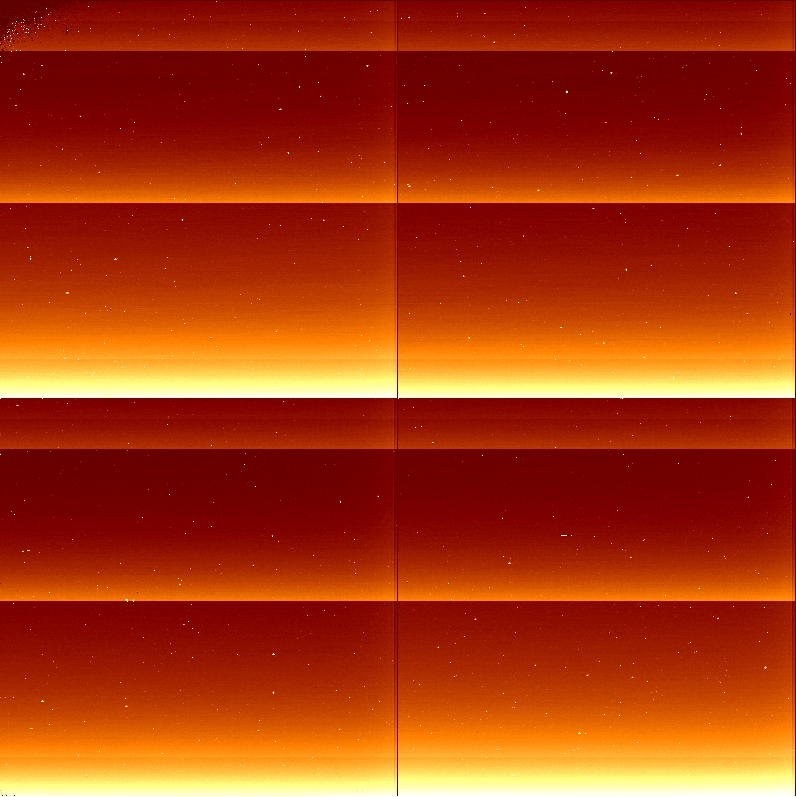
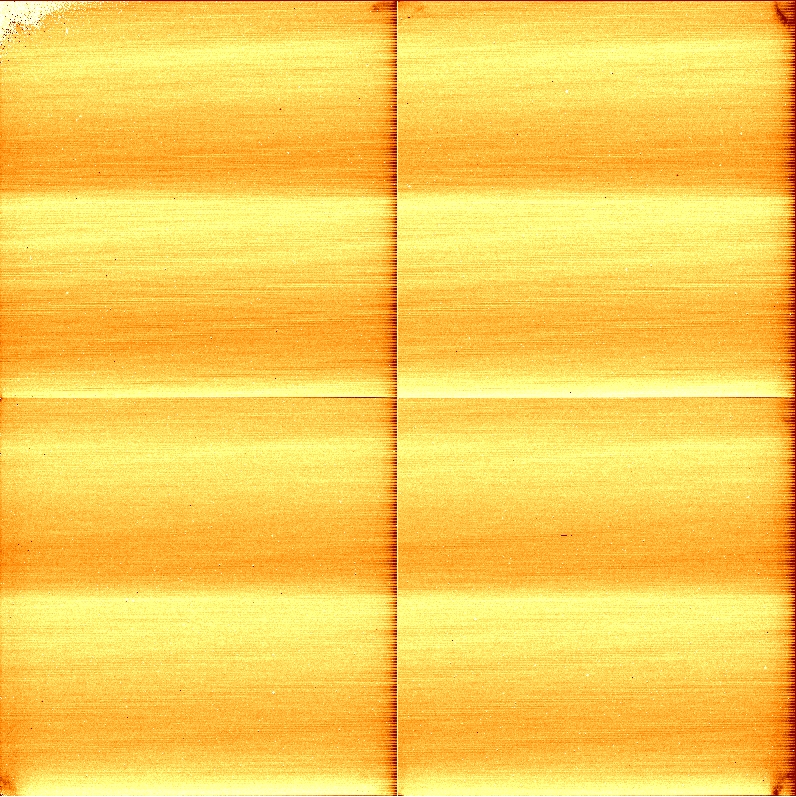
Short reset-read-read darks dark 0 shown from left to right: 1) old
clockboards, 2) new clockboards, and 3) the difference image.
Notes on darks:
- As shown with the 320s long darks, the new clockboards got rid of the shift
register glow around quadrant corners.
- The jumps in level seen at y=51, y=252, and y=447 in each of the four quadrants
are the same in the old and new images. Looking at the difference image the gradient
across each quadrant does not seem to be altered with the new clockboards. The jump
positions did not change by changing the array PCB either. They do change with
arrays, though.
Dark levels
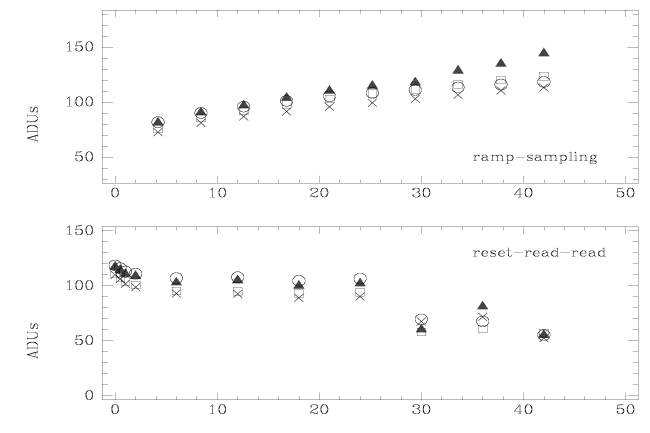
The count level is plotted versus the integration time on the x-axis. The four
quadrants are shown with different plot symbols. For each quadrant the median level
of all pixels, excluding the first 100 lines to avoid reset-anomaly problems, is
plotted. The upper window shows the ramp-sampling mode and the lower shows the
reset-read-read mode. This behaviour is as it has always been for NOTCam darks.
Reset images
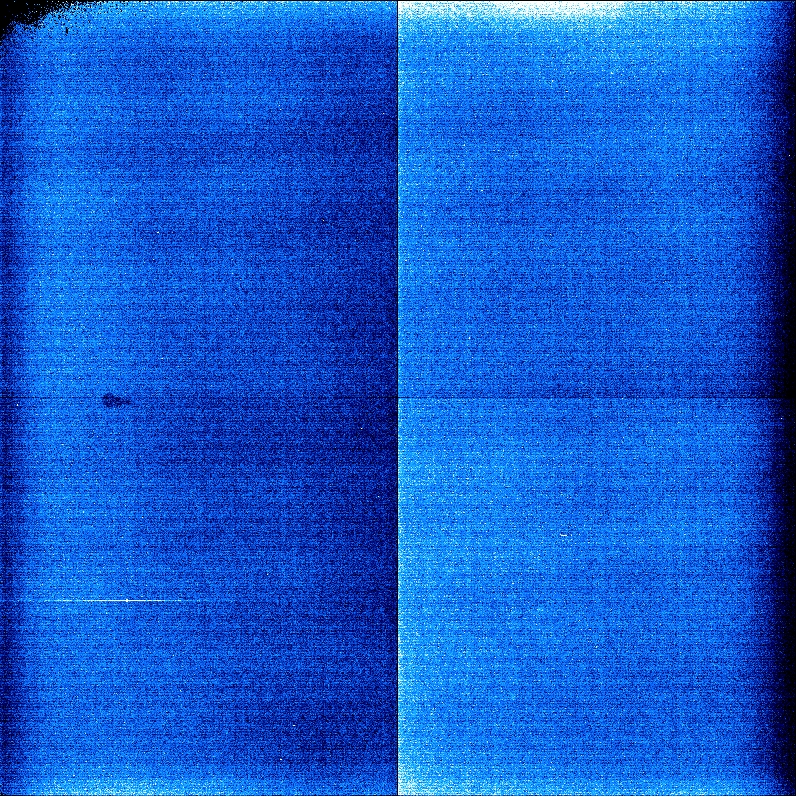
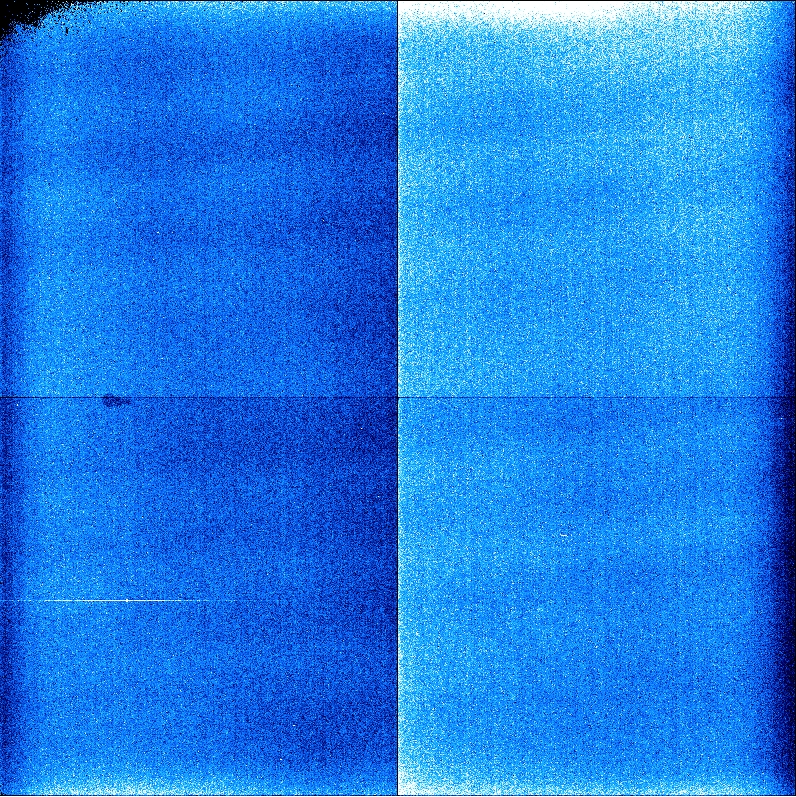
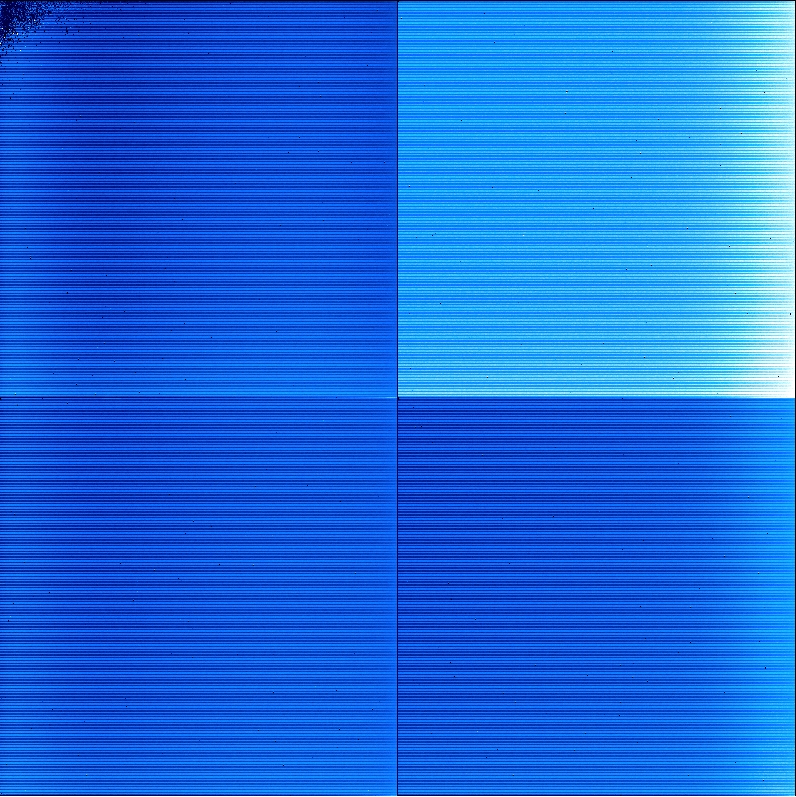
From left to right: 1) OLD clockboards reset image, 2) NEW clockboards reset
image, 3) difference image.
Notes on reset images:
- The faint broad bands, tilted about 20 degrees and marginally seen only in the
new clockboard reset image, are the interference features that are believed to be
due to pick-up noise.
- We notice the presence of narrow horizontal stripes of alternatingly higher and
lower intensity in the old clockboard reset image. (These stripes actually became
stronger when the array PCB was upgraded in Dec-2007, and the peak-to-peak amplitude
went from 7% to 11%). With the new clockboards these stripes have disappeared.
- NOTE. Those stripes normally subtracted out well, and there was no presence of
such stripes on the reset-subtracted images in most cases. For low-background cases,
however, such as darks, there were two exceptions: 1) where there was strong
interference pattern (due to pick-up noise?), and 2) along the first few
columns of each quadrant. Here the stripes didn't cancel well.
Conclusions
The new clockboards work fine and improve the image quality. Improvements are:
- Practically full removal of the earlier strongly present shift-register glow.
- Removal of horizontal stripes.
- Lower and more stable readnoise, especially seen for the reset-read-read mode.
Practically all other aspects of the detector remain as before. There is a
possible marginally higher amount of hot pixels in longer exposures (preliminary
analysis shows an increase from 0.8% to 1.1% on 42 s darks), but this needs to
be confirmed. Cold pixels remain as before.
Comments to Amanda









